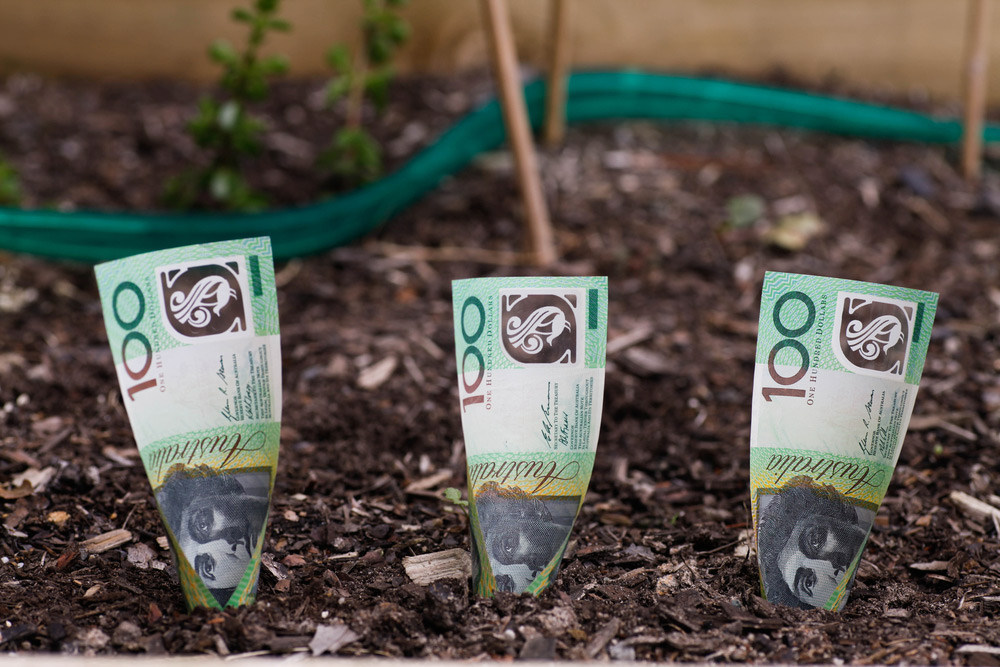
The Property Investment Basics That You Need To Know
Real estate has the potential to become your main vehicle for creating wealth, but only if you take the time to learn some crucial property investment basics to set you up for success as an investor.
All too often, wanna-be investors try to jump into the game without fully understanding what they’re getting themselves into. Before you even put in your first offer, you need to determine what your “dream” financial goal is, and then from there you can develop a custom-built plan that not only suits your current lifestyle but also challenges you to make decisions for your desired future.
These are the four property investment basics that every investor needs to know before buying an investment property.
1. BRAINSTORM YOUR FINANCIAL FUTURE
In order to set yourself up for success, you need to consider what you desire from property investing. This is the first step in property investment basics, so be bold and dream big – your future is in your hands!
Having a clear understanding of the end-goal will greatly assist you when it comes to planning how to get there. Perhaps you’re wanting to work less hours, travel more or retire at 40? Sit down, grab a pen and paper and start mapping out your dream life.
Setting up your plan of attack
Now that you have a clear understanding of what you want, it’s time to establish a timeframe for achieving your goals. The key to building a sustainable plan is to break it down into micro-steps that you can work towards each week.
- Establish a six month, one year and five year time frame.
- Under each time frame, create a list of the five most important steps that you need to do to get closer to your target.
- Schedule a time, either quarterly or bi-annual to review your goals.
By reviewing your goals regularly, it will give you the opportunity to adjust your plans as your personal situation changes.
2. GET YOUR FINANCES SORTED
The foundation of your property portfolio is finances. So the next step in property investment basics is getting a handle on your money.
Pay off consumer debt
Before you even think about purchasing a home, you want to eradicate all of your consumer debt. Having consumer debt is a massive financial liability that will make it incredibly difficult to secure lending from the banks.
The less consumer debt you have, the better your ability to both purchase and service your investment properties.
Create and stick to a budget
Be honest with yourself. If you’re not disciplined with your finances, your success will be limited at best.
A budget can be done on a rough piece of paper, or if you’re after something a bit more sophisticated, then there are a multitude of budget templates online to help you track your income and expenses. Once you know where your money is going, you’ll be able to spot patterns.
The essence of budgeting is to track what’s coming in and what’s going out. Your financial situation cannot be improved if you don’t know what’s happening in your bank accounts.
Being able to create and stick to a budget is a vital skill that will assist you greatly as you expand your property portfolio and accumulate wealth so the earlier you can get a grasp on it, the better.
3. LEARNING THE KEY CONCEPTS
When you’re first starting out in property investing, it can often feel like there are a million things you need to know before you can even purchase your first home. For many people, this can be a put off and is usually when they tend to throw in the towel. However, if you put some time aside to become informed, the rewards for your efforts will pay off – literally!
While there are several key concepts that you should have a basic understanding of, you certainly do not need to become an expert in everything real estate to build a successful property portfolio.
Here’s a few simple things to be across.
Drivers of the real estate market
In order to secure a great property to add to your portfolio, you need to understand the drivers that influence the market. For example, knowing that investment in infrastructure generally leads to increased population will help you identify the areas that are on a growth curve. The main market factors to be aware of are:
- Infrastructure – spending on infrastructure points to a growing economic base
- Yield variation – signals growth
- Supply and demand – indicates need in the marketplace
- Population – fuels growth in an area
- Economics – reveals clues to an area’s capacity for growth
- Demographics – influences growth – as incomes grow, so do property values
Positive versus negatively geared property
A property is negatively geared when the expenses of owning the property – including maintenance costs, depreciation and borrowing costs – exceeds the rental income, resulting in a loss.
Negative gearing deductions are most beneficial to people in high income brackets where they are in the top marginal tax rate. This is because the ‘loss’ is able to be offset against other income (e.g. salary or business income) therefore reducing the tax obligations of the owner.
Including depreciation within property expenses can increase the loss on paper without incurring a cash loss. Therefore, increasing the expenses and amount of tax deductions available.
This strategy works very well for high income individuals as the more money which is borrowed the more interest is charged which can then be deducted 100% from the owner’s taxable income.
If you’re planning to adopt a negatively geared property strategy, then you must have a good understanding of the potential costs. While negative gearing allows investors to recoup some of the costs via tax savings, it still results in losing money and therefore cash is needed to help service the property. The long-term strategy behind negative gearing is the hope that the losses will eventually be compensated in the form of capital gains in the future.
A property which is geared positively means that the income derived from owning the property exceeds the financial and maintenance costs incurred. Positive gearing is generally seen as lower risk than negative gearing because it provides more consistent income. The surplus income can cushion investors from interest rate hikes or unexpected property (or life) costs.
With a positively geared investment, investors are not able to reduce their income or get tax benefits. The ‘profit’ made on the rental income will be taxed at the appropriate rate. However, what positive gearing does provide is additional income which can be used to pay down the mortgage quicker, or used to invest elsewhere.
Both negative and positive gearing have their place in a property investor’s portfolio which is why it is important to have a clear understanding of both to determine how they may fit into your real estate strategy.
Positive cash flow versus positively geared property
A “positively geared” property creates more income than expenses before tax, which means your rental return and tax breaks cover your outgoings, leaving your wage or income unaffected. Whereas positive cash flow property only creates more income than expenses after tax deductions and refunds are calculated, making it a self-funding investment.
Investors that follow a positive cash flow strategy understand that living off passive income is the key to an early retirement. That isn’t to say that positive cash flow is better than a positively geared property – it all comes down to your specific financial situation.
For example, if you’re looking to purchase in a high growth area then perhaps a positive cash flow strategy will be right for you. Generally speaking, new or newly renovated (high depreciation) homes hold the greatest potential to be positive cash flow because you can claim a larger “on paper” loss.
On the other hand, properties which are older and less expensive have the potential to offer a strong rental return, creating a positively geared property.
Your strategy will come down to whether you want to lose money and recover it through taxes or earn money before taxes and offset the income received through tax deductions, essentially paying little to no tax.
The importance of safety buffers
Regardless of what strategy works for you, the concept of safety buffers is a key underlying factor to all successful real estate strategies. Every investor’s budget should include money set aside for any unforeseen expenses that may arise. This is not extra money to go on holiday or buy a new car, it should be reserved for legitimate expenses connected with your investment property(ies).
Having your safety buffer sit in an offset account gives you the ability to earn compound interest until such a time where this money may be needed.
An offset account is simply a savings account which is linked to your loan account. Let’s assume you have a mortgage of $100,000 which is linked to an offset account with a balance of $10,000.
In this scenario, you would only accrue interest on $90,000 rather than the entire $100,000. You will still pay back the principal of $100,000, however the interest will only be calculated on the $90,000. Therefore, your mortgage repayments will be more effective at reducing both the principal and interest on your loan.
4. GET HELP FROM EXPERTS
Now that you have a basic understanding of the key concepts of property investing, it is time to put them into action. Remember that knowledge is only potential power. You can research for months, but if you take no action, you’ll still be back at square one.
Beginner investors often experience information fatigue, they know what to do but don’t know where to start. This is why it is crucial to develop your six-star team that will help you climb the ladder of success. Let’s explore this further:
Find a good mentor
The best way to learn is from someone who is doing what you want to achieve. When learning something new, mentoring can help ease the learning curve because in addition to “textbook” knowledge, a student under the tutelage of an experienced property mentor can take advantage of the many years experience of their mentor without having to go through the experiences themselves.
Establish relationships with industry experts
Some of the most successful people in the world will tell you it’s ‘who you know’ not ‘what you know’ and this couldn’t be more true for the real estate industry.
Find networking events that give you the opportunity to mix with industry experts. Our free real estate investing seminar is a high-value two-hour event that will connect you with the people you need to know to build your team.
Having the right team is vital for your success, by surrounding yourself with knowledgeable property professionals, you will be putting yourself in a position to soak up all that they know. It’s all about working smarter, not harder.
PROPERTY INVESTMENT BASICS NEXT STEPS!
Now that you have a good understanding of the four top property investment basics, it is important to remember that everyone’s journey is unique and there is generally no one size fits all approach to real estate investing.
As long as you are aware of all strategies, and you work with a team to determine which is the best fit for you and your long-term goals then you’ll be on your way to creating generational wealth through property investment.
The best thing you can do is get support, so come along to one of our FREE property investing masterclasses. Our coaches and mentors have real life experience as investors and can give you the tools, resources and knowledge to help you build your property portfolio.
Recent Articles
Use Equity To Create Cashflow in 4 Simple Steps!
Equity is an interesting topic when it comes to real estate. Smart property investors know that equity can play a key part in creating passive income that accumulates over time, allowing us to eventually work less and ultimately do more of what we love. But in order to be able to use equity to create passive income, there are some important steps property investors need to take right at the beginning of their journey.
Economy Bounce-back Better Than Expected, What Investors Need To Know
Bouncing back much faster – and stronger – than predicted post-COVID, the Reserve Bank of Australia (RBA) is anticipating a good end to 2021, and a great 2022. But with so much uncertainty over the last 12 months, it’s hard to know if this economy is here to stay, and if so, how it will impact property investors in the long-run.
The Equity Tactic For Excelling Your Property Portfolio
While long term we know that cash flow is dependent on a good rental income, capital growth is the quickest way our property can pay us back. This comes down to having some smart tactics to get the most out of every dollar of value in our investment properties – something we like to call equity lock.
Are You at Risk of Losing Millions?
Considering that all major Australian cities are coastal, and most of the richest neighbourhoods are beachside, the growing threat of severe weather incidents due to global warming throws a serious spanner in the works when considering where to buy and invest. If you’re a climate change sceptic, we’re not here to judge. But that position isn’t going to help you if the institutions you rely on to protect your assets won’t have a bar of your $3 million beachfront house.
The Best Home Loan for Property Investors
Deciding on the right loan structure as a property investor, is a little bit like choosing the right outfit on a first date. It depends on what stage of life you’re at! If you’re new to the game, something a little daring might work best. Later on, you might want to play it safe. It’s the same for property investment and the stage you’re at reflecting how risky or safe your loan structure needs to be. Here we weigh up the pros and cons of principle and interest loans vs interest only loans for property investors.
The Three Golden Rules of Selling an Investment Property
Rules are an important part of life. And rules in most cases, are really just another word for common sense. They give us a clear framework around many important aspects of life, so it’s no surprise when it comes to selling your investment property, there’s a number of rules you need to follow in order to get the best result.
If you want to know when to sell an investment property, or even if selling an investment property is a good idea, all you have to do is read the rules.
Use Debt To Create Wealth in 3 Simple Steps
Most of us were raised with the idea that debt is bad. Debt drags you down. Rich people are never in debt.
While that may have been true for our great grandparents, it’s no longer the case. Debt is one of the keys that can unlock future wealth as a property investor. The more good debt you have, the more income you can create.
But, before you go out and put yourself $1 million in the hole, let’s talk about the right kinds of debt. The debt that’s going to lead to success, not ruin. This is called…
Harness Data To Help Guide Property Investor Profits
I’m sure you’ve heard – data is the new currency. It’s the next big thing for business and it will be a catalyst for driving the world forward over the next few years. Learning how to harness the power of data in property investing, will be a secret weapon all investors can use to create more wealth. So, what is data? It’s information, insights and predictions that property investors can use to help them make smart property purchases.
A Lending Boom Is Coming Are You Ready?
After a lot of bad news over the past 12 months – thanks a lot COVID-19 – it’s nice to be able to kick off 2021 with some good news. There’s going to be a lending boom which, if you have your property investment strategy in place, is going to make your life a whole lot easier so you can build your property portfolio faster and cheaper.












